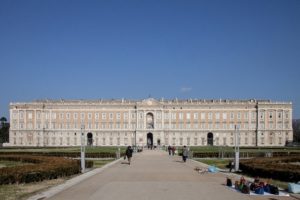We often hear about places described as being registered as UNESCO World Heritage sites.
 Have you ever wondered what that actually means, and why some places are on this list while others are excluded? Today we’ll try to explain what it actually means to be a UNESCO site and what are the characteristics necessary to get on the list. The conditions for participation are strict and the candidacy process involves several phases.
Have you ever wondered what that actually means, and why some places are on this list while others are excluded? Today we’ll try to explain what it actually means to be a UNESCO site and what are the characteristics necessary to get on the list. The conditions for participation are strict and the candidacy process involves several phases.
The first step is to apply for enrollment in the national Tentative List: in this way each nation lets the World Heritage Center know that they would like to register their site, or sites, on the World Heritage list within the next 5-10 years. Being registered on this provisional list does not automatically mean that the site will gain the status of a World Heritage Site. If an artistic site or a natural asset becomes part of the Tentative List, a long process begins during which the appointed committees, that meet just once a year, judge the candidates of the various nations on the basis of very strict criteria, and decide whether to promote, postpone or reject the application. It is a complicated procedure that undergoes the scrutiny of various competent bodies, but this guarantees that World Heritage Sites are truly something rare and precious and places worth visiting in the eyes of the tourist.
The Destinations Nominated by Italy in 2019 and in 2020
 Italy has many locations that have become part of UNESCO as World Heritage Sites: The Sassi of Matera, the Royal Palace of Caserta, the Archaeological Park of Pompeii and Herculaneum, the Mausoleum of Galla Placidia in Ravenna, the Dolomites in Friuli Venezia Giulia. These are just a few of the 54 assets that were on the UNESCO list in 2018. It is no accident that Italy is the country with the largest number of sites registered on the list. If you haven’t yet had the chance to see the wonders of this country with your own eyes, don’t hesitate to contact Dragonfly Tours and we will adapt your tour to your needs.
Italy has many locations that have become part of UNESCO as World Heritage Sites: The Sassi of Matera, the Royal Palace of Caserta, the Archaeological Park of Pompeii and Herculaneum, the Mausoleum of Galla Placidia in Ravenna, the Dolomites in Friuli Venezia Giulia. These are just a few of the 54 assets that were on the UNESCO list in 2018. It is no accident that Italy is the country with the largest number of sites registered on the list. If you haven’t yet had the chance to see the wonders of this country with your own eyes, don’t hesitate to contact Dragonfly Tours and we will adapt your tour to your needs.
Each year it is possible to nominate two sites to the list, and in 2019 the Italian National Commission for UNESCO has chosen to propose the Mediterranean Alps, a geographical territory that embraces three nations and presents a very rich variety of flora and fauna, and the Prosecco Hills of Conegliano and Valdobbiadene, in Veneto, which you can read more about in our article on the lands of prosecco. We are waiting for the results of the next commission’s meeting that will be held in Azerbaijan in July.
In the list of assets about to become to become World Heritage sites in 2020, two equally unique destinations were chosen: in the category of cultural heritage, Padua will compete with its “Padova Urbs Picta-Giotto, the Scrovegni Chapel and the pictorial cycles of the fourteenth century “, extraordinary pictorial monuments of incomparable importance, while in the category of natural sites there is Montecatini Terme, which is included in the circuit of the” Great Spas of Europe”, a route that comprises various historical thermal areas.
All that’s left for us to do is wish good luck to the splendors of this beautiful country.

